FDA Coronary Drug-Eluting Stents-Nonclinical and Clinical Studies
标准简介
Coronary Drug-Eluting Stents-Nonclinical and Clinical Studies[附网盘链接]是Food&Drug Administration于当前发布的FDA标准,适用于U.S。标准截图
![Coronary Drug-Eluting Stents-Nonclinical and Clinical Studies[附网盘链接]](/img/202109141036348bq30.jpg)
标准文档说明
标准文档类型为Coronary Drug-Eluting Stents-Nonclinical and Clinical Studies[附网盘链接]高清PDF版本(文字版),标准文档内可进行搜索,可以复制原文,可粘贴。标准部分原文
Draft — Not for Implementation 1
1 Guidance for Industry 2 Coronary Drug-Eluting Stents —Nonclinical and Clinical Studies 3 4 5 6 This draft guidance, when finalized, will represent the Food and Drug Administration's (FDA's) current 7 thinking on this topic. It does not create or confer any rights for or on any person and does not operate to bind 8 FDA or the public. An alternative approach may be used if such approach satisfies the requirements of the 9 applicable statutes and regulations. If you want to discuss an alternative approach, contact the FDA staff 10 responsible for implementing this guidance. If you cannot identify the appropriate FDA staff, call the 11 appropriate number listed on the title page of this guidance. 12 13 14 15 I. INTRODUCTION 16 2
17 This guidance is intended to provide recommendations to sponsors or applicants planning to 18 develop, or to submit to FDA, a marketing application for a coronary drug eluting stent (DES). The 19 guidance discusses the data and clinical studies needed to support such an application. This guidance 20 does not discuss noncoronary DESs (e.g., peripheral drug-eluting, nonvascular biliary stents) or 21 stents that contain biological product components such as cell or gene therapy or therapeutic 22 biological products such as monoclonal antibodies. The guidance makes recommendations for stents 23 made from metallic stent substrates, but does not provide complete information for degradable stents DRAFT
24 or stents made from other material substrates (e.g., polymer or ceramics). 25 26 The associated companion document provides additional information that may be useful, including 27 suggested contents of investigational and premarket approval applications; various examples (e.g., 28 example of a DES clinical study summary, a commitment table, test article certification); 29 information on good animal husbandry, biocompatibility considerations, and issues related to U.S. 30 and OUS (outside the U.S.) studies; and labeling recommendations. The companion document is 31 intended to be used together with this guidance. 32 33 FDA's guidance documents, including this guidance, do not establish legally enforceable 34 responsibilities. Instead, guidances describe the Agency's current thinking on a topic and should be 35 viewed only as recommendations, unless specific regulatory or statutory requirements are cited. The 1
This guidance has been prepared by a working group that included members of the Center for Devices and Radiological Health (CDRH), Center for Drug Evaluation and Research (CDER), and Office of Combination Products (OCP) in the Office of the Commissioner at the Food and Drug Administration. 2
For purposes of this guidance, sponsor refers to any person who takes the responsibility for and initiates a clinical investigation; applicant refers to any person who submits an application, amendment, or supplement to obtain FDA approval of a new medical product or any other person who owns an approved application. Sponsor is used primarily in relation to investigational device exemption (IDE) applications and applicant is used primarily in relation to premarket approval (PMA) submissions. 3/26/2008
网盘链接
百度网盘:https://pan.baidu.com/s/1BzA9vFH2t8oZSm5x5Wo8KQ
提取码:kgkt
【温馨提示】大资料ISO是提供信息发布的专业信息类网站,所有内容均由用户发布,不代表本站观点,本站亦不存储所涉及的文件及资料。如有【免费资料】以及【付费资料】,请用户根据自己的需求,自行判断是否需要获取。如有交易诈骗、内容侵权可发送邮件至kf@dzl100.com,我们审查后若发现情况属实,会立即对相关内容进行删除处理。
加载用时:46.0647 毫秒
相关评论
相关文章
-
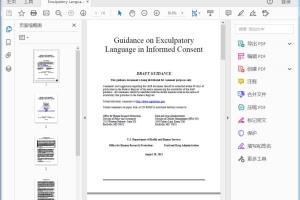
FDA Exculpatory Language in Informed Consent
Exculpatory Language in Informed Consent[附网盘链接]是FDA于不久前发布的FDA标准,适用于美国。本次分享的标准文档为高清PDF(文字版),标准文档内可搜索,可复制,可粘贴。本文结尾附网盘链接。
-

FDA Allowable Excess Volume and Labeled Vial Fill Size in Injectable Drug and Biological Products
Allowable Excess Volume and Labeled Vial Fill Size in Injectable Drug and Biological Products[附网盘链接]是Food And Drug Administration于不久之前发布的FDA标准,适用于US。本次分享的标准文档为高清PDF(文字版),标准文档内可搜索,可复制,可粘贴。本文结尾附网盘链接。
-
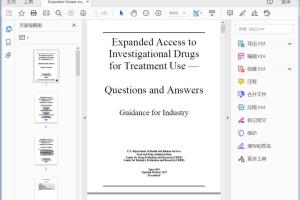
FDA Expanded Access to Investigational Drugs for Treatment Use - Questions and Answers
Expanded Access to Investigational Drugs for Treatment Use - Questions and Answers[附网盘链接]是Food&Drug Administration于不久前发布的FDA标准,适用于U.S。本次分享的标准文档为高清PDF(文字版),标准文档内可搜索,可复制,可粘贴。本文结尾附网盘链接。
-
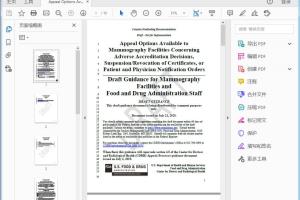
FDA Adverse Accreditation Decisions, SuspensionRevocation of Certificates, or Patient and Physician Notification Orders Draft
Adverse Accreditation Decisions, SuspensionRevocation of Certificates, or Patient and Physician Notification Orders Draft[附网盘链接]是Food And Drug Administration于不久之前发布的FDA标准,适用于United States。本次分享的标准文档为高清PDF(文字版),标准文档内可搜索,可复制,可粘贴。本文结尾附网盘链接。
-
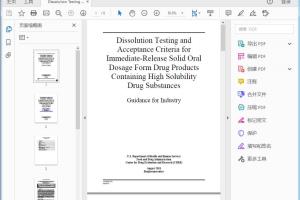
FDA Dissolution Testing and Acceptance Criteria for Immediate-Release Solid Oral Dosage Form Drug Products Containing High Solubility Drug Substances
Dissolution Testing and Acceptance Criteria for Immediate-Release Solid Oral Dosage Form Drug Products Containing High Solubility Drug Substances[附网盘链接]是FDA于过去发布的FDA标准,适用于美国。本次分享的标准文档为高清PDF(文字版),标准文档内可搜索,可复制,可粘贴。本文结尾附网盘链接。
-

FDA Exculpatory Language in Informed Consent
Exculpatory Language in Informed Consent[附网盘链接]是FDA于不久前发布的FDA标准,适用于美国。本次分享的标准文档为高清PDF(文字版),标准文档内可搜索,可复制,可粘贴。本文结尾附网盘链接。
-
![CVM GFI #185 (VICH GL43) Target Animal Safety for Veterinary Pharmaceutical Products.pdf[网盘链接]](/img/small/20210914103659dm8zg.jpg)
CVM GFI #185 (VICH GL43) Target Animal Safety for Veterinary Pharmaceutical Products.pdf[网盘链接]
GFI #185 (VICH GL43) Target Animal Safety for Veterinary Pharmaceutical Products.pdf是于发布的标准,适用于。本次分享的标准文档为高清PDF(文字版),标准文档内可搜索,可复制,可粘贴。本文结尾附网盘链接。
-

FDA Allowable Excess Volume and Labeled Vial Fill Size in Injectable Drug and Biological Products
Allowable Excess Volume and Labeled Vial Fill Size in Injectable Drug and Biological Products[附网盘链接]是Food And Drug Administration于不久之前发布的FDA标准,适用于US。本次分享的标准文档为高清PDF(文字版),标准文档内可搜索,可复制,可粘贴。本文结尾附网盘链接。
-

FDA Expanded Access to Investigational Drugs for Treatment Use - Questions and Answers
Expanded Access to Investigational Drugs for Treatment Use - Questions and Answers[附网盘链接]是Food&Drug Administration于不久前发布的FDA标准,适用于U.S。本次分享的标准文档为高清PDF(文字版),标准文档内可搜索,可复制,可粘贴。本文结尾附网盘链接。
-

FDA Adverse Accreditation Decisions, SuspensionRevocation of Certificates, or Patient and Physician Notification Orders Draft
Adverse Accreditation Decisions, SuspensionRevocation of Certificates, or Patient and Physician Notification Orders Draft[附网盘链接]是Food And Drug Administration于不久之前发布的FDA标准,适用于United States。本次分享的标准文档为高清PDF(文字版),标准文档内可搜索,可复制,可粘贴。本文结尾附网盘链接。
-

FDA Dissolution Testing and Acceptance Criteria for Immediate-Release Solid Oral Dosage Form Drug Products Containing High Solubility Drug Substances
Dissolution Testing and Acceptance Criteria for Immediate-Release Solid Oral Dosage Form Drug Products Containing High Solubility Drug Substances[附网盘链接]是FDA于过去发布的FDA标准,适用于美国。本次分享的标准文档为高清PDF(文字版),标准文档内可搜索,可复制,可粘贴。本文结尾附网盘链接。
-

FDA Clinical Pharmacology Labeling for Human Prescription Drug and Biological Products — Content and Format
Clinical Pharmacology Labeling for Human Prescription Drug and Biological Products — Content and Format[附网盘链接]是Food And Drug Administration于当前发布的FDA标准,适用于United States。本次分享的标准文档为高清PDF(文字版),标准文档内可搜索,可复制,可粘贴。本文结尾附网盘链接。
-
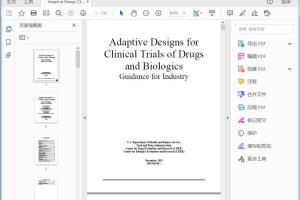
FDA Adaptive Design Clinical Trials for Drugs and Biologics Guidance for Industry
Adaptive Design Clinical Trials for Drugs and Biologics Guidance for Industry[附网盘链接]是FDA于过去发布的FDA标准,适用于美国。本次分享的标准文档为高清PDF(文字版),标准文档内可搜索,可复制,可粘贴。本文结尾附网盘链接。
-

FDA Compliance Policy for the Quantity of Bioavailability and Bioequivalence Samples Retained Under 21 CFR 320.38(c)
Compliance Policy for the Quantity of Bioavailability and Bioequivalence Samples Retained Under 21 CFR 320.38(c)[附网盘链接]是FDA于不久前发布的FDA标准,适用于U.S。本次分享的标准文档为高清PDF(文字版),标准文档内可搜索,可复制,可粘贴。本文结尾附网盘链接。
-

FDA Coronary Drug-Eluting Stents — Nonclinical and Clinical Studies -Companion Document
Coronary Drug-Eluting Stents — Nonclinical and Clinical Studies -Companion Document[附网盘链接]是FDA于当前发布的FDA标准,适用于美国。本次分享的标准文档为高清PDF(文字版),标准文档内可搜索,可复制,可粘贴。本文结尾附网盘链接。